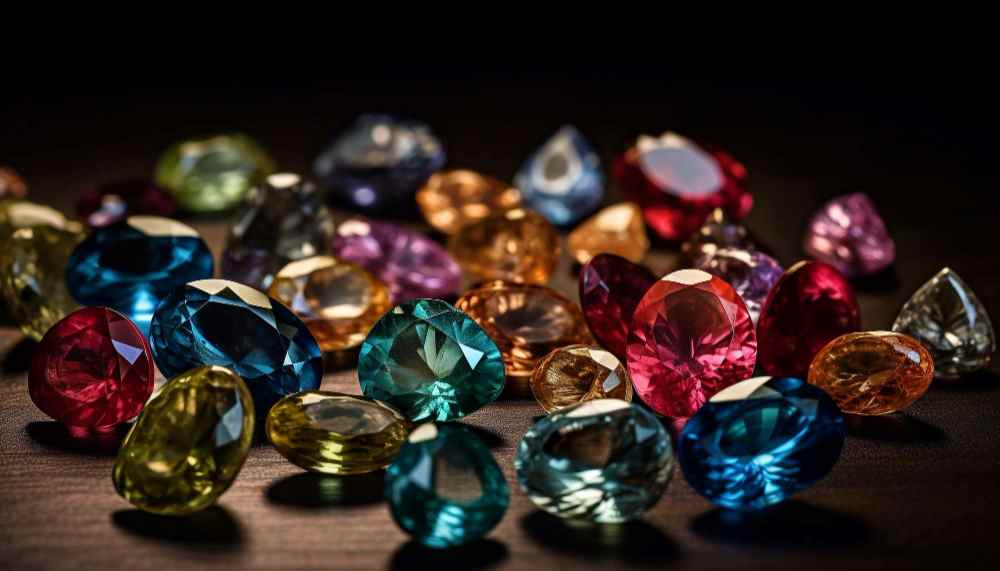Are Lab-Created Gems Real?
In the world of gemstones and jewelry, there has long been a debate about the authenticity and value of lab-created gems. Are these man-made stones real, or are they mere imitations of the naturally occurring gemstones that have been prized for centuries? The answer is not as straightforward as it may seem, and it depends on how one defines “real.”
What Are Lab-Created Gems?

Lab-created gems, also known as synthetic or cultured gems, are stones that are grown in a laboratory setting using advanced technological processes. These stones are structurally, chemically, and optically identical to their natural counterparts, with the same crystal structures, refractive indices, and other properties. The only difference is that they are not formed by geological processes deep within the Earth’s crust over millions of years.
The two main methods for creating synthetic gems are:
- High-Pressure, High-Temperature (HPHT): This method replicates the extreme heat and pressure conditions found deep within the Earth’s mantle to grow crystals from a “seed” of the desired mineral.
- Flux Growth: This involves dissolving a mineral powder in a molten flux solution and allowing crystals to slowly form as the solution cools.
Are They Real Gems?

From a scientific perspective, lab-created gems are absolutely real. They are not imitations or simulants made of different materials, like cubic zirconia or glass. They are genuine gemstones, with the same composition and properties as their natural counterparts. In fact, most gemological laboratories cannot distinguish between a well-made synthetic gem and a natural one without advanced testing.
However, some argue that lab-created gems are not “real” because they are not formed naturally by geological processes. They believe that the rarity and natural origin of gems are what give them their true value and authenticity.
Proponents of synthetic gems counter that the process of creating them in a lab is not that different from the natural process, just accelerated. The conditions and materials used are the same; the only difference is the time frame and controlled environment.
Additionally, many natural gemstones on the market today have been treated in various ways, such as heating, irradiation, or diffusion, to enhance their color or clarity. Some would argue that these treated stones are no more “natural” than a well-made synthetic gem.
The Reality of the Market

Regardless of the philosophical debate, the reality is that lab-created gems have become a significant and accepted part of the gem and jewelry market. Major retailers, from high-end jewelers to department stores, now offer a wide range of synthetic diamonds, sapphires, rubies, emeralds, and other gemstones.
While natural gemstones still command a premium price due to their rarity and perceived value, lab-created gems offer a more affordable and ethical alternative for many consumers. They provide the beauty and sparkle of natural gems at a fraction of the cost, making fine jewelry more accessible to a wider range of buyers.
Moreover, the synthetic gem industry has become a major contributor to the global economy, employing thousands of people and generating billions in revenue annually. Major players in the industry include well-known companies like Charles & Colvard, which pioneered the creation of moissanite, a lab-grown gemstone with properties similar to diamond.
Ethical and Environmental Considerations

One of the driving forces behind the growing popularity of lab-created gems is the ethical and environmental concerns surrounding the mining and trade of natural gemstones. The extraction of gems from the Earth can have significant environmental impacts, including deforestation, soil erosion, and water pollution. Additionally, the gem trade has historically been tainted by issues of human rights abuses, child labor, and conflict financing.
Lab-created gems offer a more sustainable and ethical alternative, as their production has a much smaller environmental footprint and is not associated with human rights violations or funding armed conflicts. This has made them increasingly attractive to consumers who prioritize ethical and socially responsible practices in their purchasing decisions.
Disclosure and Consumer Education

While lab-created gems are now widely accepted and marketed, there are still concerns about transparency and consumer education. It is crucial that retailers and manufacturers clearly disclose the origin of their gemstones, whether they are natural or synthetic, to avoid any confusion or deception.
Many industry organizations and regulatory bodies have established guidelines and certifications to ensure accurate disclosure and labeling of lab-created gems. Consumers should also educate themselves on the differences between natural and synthetic stones, their properties, and their respective values, to make informed purchasing decisions.
Conclusion
In conclusion, lab-created gems are real gemstones from a scientific perspective, with identical chemical compositions and physical properties to their natural counterparts. While some may argue that their lack of natural origin makes them less “authentic,” the reality is that they have become a significant and legitimate part of the gem and jewelry industry, offering a more affordable, ethical, and sustainable alternative to mined gemstones.
As with any purchase, it is essential for consumers to be well-informed about the origin and properties of the gems they are buying, whether natural or synthetic. With proper disclosure and consumer education, both natural and lab-created gems can coexist in the market, catering to different preferences and budgets while providing the beauty and sparkle that have captivated humans for millennia.







